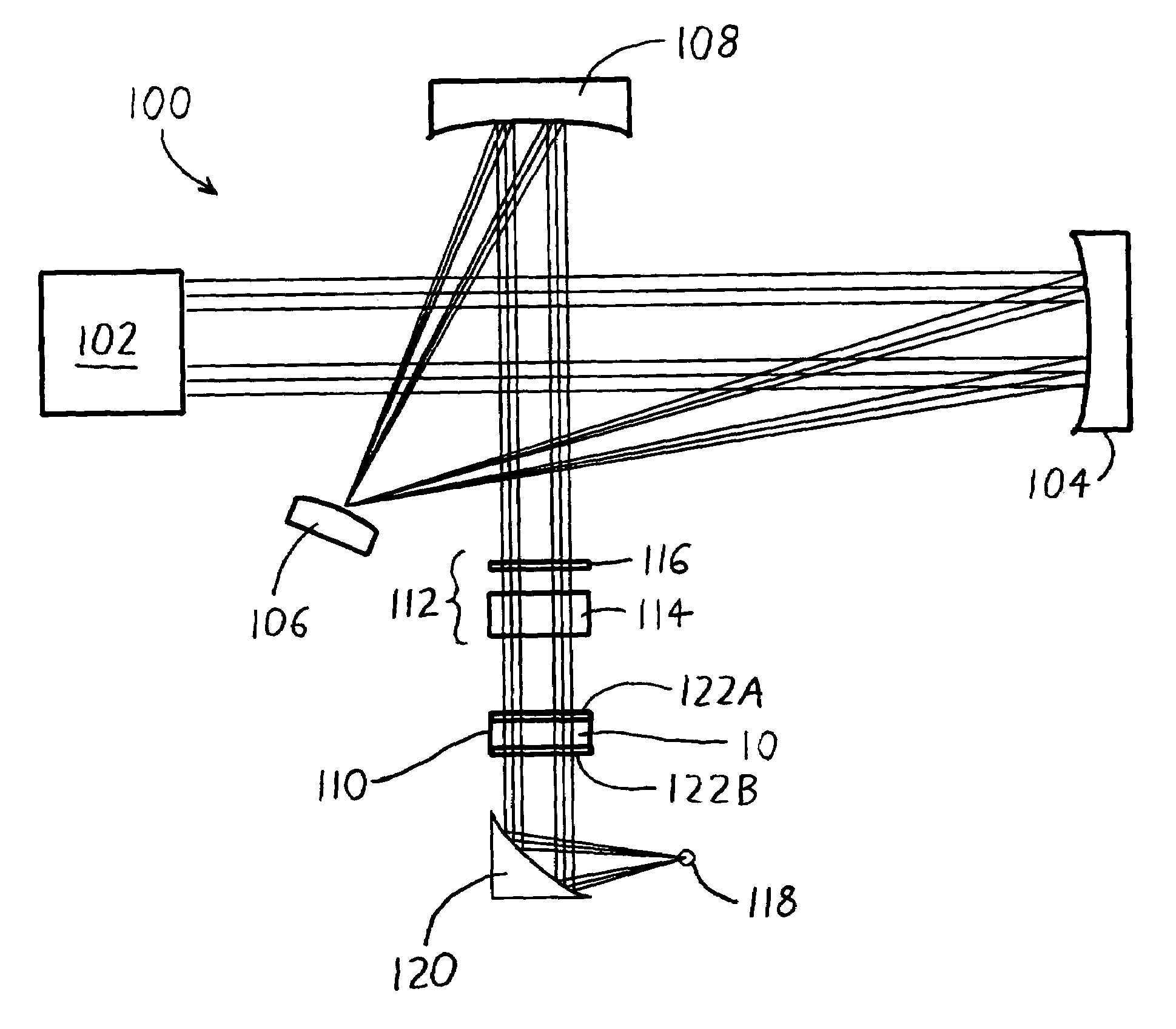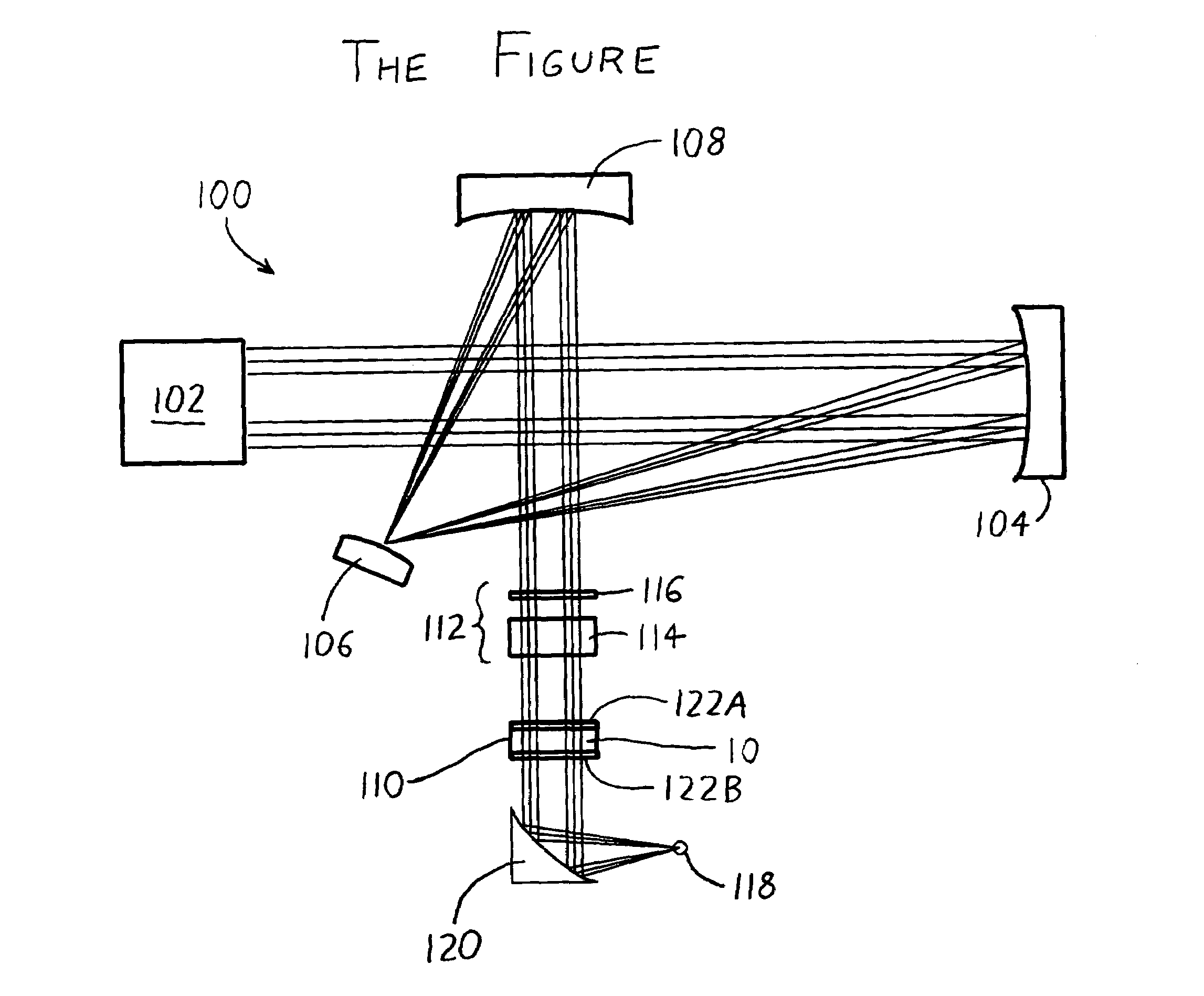Vibrational circular dichroism spectrometer using reflective optics
a circular dichroism and spectrometer technology, applied in the field of vibrational circular dichroism spectrometer using reflective optics, can solve the problems of time needed to generate high-quality vcd spectrum, measurement is prone to noise and artifacts, scans can take significant time to execute, etc., to achieve high-quality (high signal-to-noise) vcd measurements, increase light throughput, and improve the effect of light captur
- Summary
- Abstract
- Description
- Claims
- Application Information
AI Technical Summary
Benefits of technology
Problems solved by technology
Method used
Image
Examples
Embodiment Construction
[0012]To expand on the foregoing discussion, following is a list of exemplary specific components that can be used in the foregoing arrangement. The light source 102 may be an interferometer and associated components (namely a mid-IR beamsplitter and “Passport” mirror option) taken from a Nicolet 8700 Fourier Transform Infrared (FTIR) spectrometer (Thermo Electron Corp., Waltham, Mass.). The mirrors 104, 106, and 108 can take the form of the following:
[0013]focusing mirror 104: concave spherical mirror, 500 mm radius of curvature, 50 mm diameter, preferably gold-coated.
[0014]field mirror 106: concave spherical mirror, 180 mm radius of curvature, 25 mm diameter, preferably gold-coated.
[0015]collimator 108: concave spherical mirror, 250 mm radius of curvature, 40 mm diameter, preferably gold-coated.
[0016]These can be readily custom-made by most lens manufacturers. The modulator 112 may include a Type 5-8321 wire grid IR linear polarizer 116 (Optometrics Corp, Ayer, Mass.), and a Type ...
PUM
 Login to View More
Login to View More Abstract
Description
Claims
Application Information
 Login to View More
Login to View More - R&D
- Intellectual Property
- Life Sciences
- Materials
- Tech Scout
- Unparalleled Data Quality
- Higher Quality Content
- 60% Fewer Hallucinations
Browse by: Latest US Patents, China's latest patents, Technical Efficacy Thesaurus, Application Domain, Technology Topic, Popular Technical Reports.
© 2025 PatSnap. All rights reserved.Legal|Privacy policy|Modern Slavery Act Transparency Statement|Sitemap|About US| Contact US: help@patsnap.com


